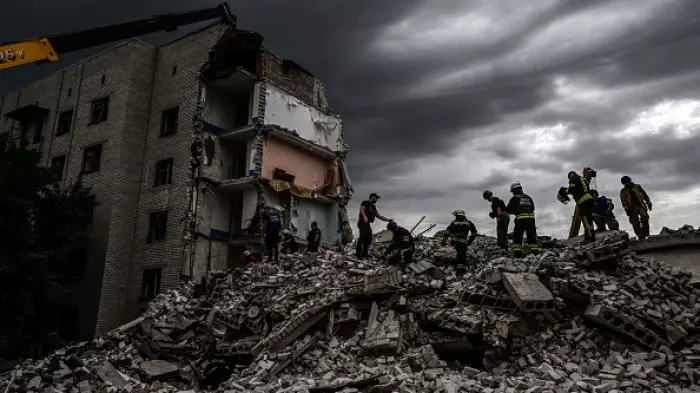When Rob Campbell summed up recently what he realised after his sacking as chair of Health New Zealand (Te Whatu Ora), much of what he said resonated with me.
Campbell’s basic conclusion in a speech to the Fabian Society is that there are important aspects of the ‘reform package’ which are inadequate and implementation to date has been significantly deficient. But it is not “incapable of repair”.
To his credit, he does not hold back on whether there is a crisis in the health service. He takes it as a given.
“If anyone does not think that we have a health service crisis ... I don’t really have anything useful to share with you,” Campbell said.
Although as chair he never acknowledged the crisis publicly, he did privately.
What the reform architects got wrong
Among the reasons why Campbell believes the architects of the ‘health reforms’ failed is that structures such as the district health boards (DHBs), including their shared service agencies, were removed “… without clearly establishing or signalling replacement structures at national, regional and local level". He’s right.
Before leaving one structure it's important to know what the replacement is. When restructuring in the 1980s led to the introduction of area health boards by successive National and Labour governments, they were well-signalled in advance and also trialled.
In 1993, the National government restructured the public health system to create a business market.
Although inherently flawed, this was well-signalled and adapted – rather replaced – existing hospital structures.
The restructuring that led to the creation of DHBs in 2001 again came as no surprise. It removed coverage of market legislation, built on existing local structures and had similarities with the former area health boards.
Underpinning these restructurings was that everyone involved continued with a significant level of local statutory decision-making operating within a national system.
What made the Pae Ora Act 2022 different and more disruptive was that this local dimension was removed. This impact was much more far-reaching than the three earlier restructurings.
Never before had NZ had such a top-down centralised vertical structure.
Compounding the problem was far too short an implementation period and too much reliance on business consultants.
Campbell’s criticism is justified.
He is also sharply critical of what he calls “… inadequate involvement of unions and professional organisations in the structuring and implementation process …” This compromised the ability to earn support and ensure clarity.
Again he is right but misses another consideration.
Regrettably, the health unions didn't measure up to the challenge by appearing to put their relationship with the government on a higher pedestal than the interests of their members.
They failed to focus on the vulnerability to their members of abolishing one structure (DHBs) without first addressing its full implications and lack of clarity over the replacement.
Further, they failed to raise alarm bells when this happened during the pandemic, despite it being blindingly obvious that they should have. This compounding failure incentivised Te Whatu Ora to take union engagement over restructuring lightly.
Campbell is similarly on the mark about mishandling IT strategy, poorly defining new structures such as ‘localities’ and Iwi Partnership Boards, failing to provide a new model of funding and support for community-provided healthcare, and failing to resolve major issues such as pay equity and parity.
Where Campbell is wrong
There is one criticism, however, where he is wrong, or at least misplaced.
He comes down hard on the non-clinical workforce Te Whatu Ora inherited. In his words, the “same people in the same or essentially similar roles showed an inadequate appreciation of the scale and depth of change required”.
The effect was to limit commitment to the new structure.
This is unfair. While the Heather Simpson-led review of the health and disability system in 2020 recommended the creation of Health NZ, it was to be quite different from the structure that started last July.
The major difference was that DHBs would have continued. Had the Simpson review recommendation been followed, Te Whatu Ora would have been in a much better space to hit the ground running.
Further, where was the supply of relevant non-clinical expertise in running Te Whatu Ora at both a national and district level to come from?
There was no ‘reserve army’ of comparable expertise to recruit from, especially when the decision to abolish DHBs was announced less than 15 months before their demise.
Responsibility for the circumstances leading to this criticism from Campbell does not rest with the workforce he inherited. Instead, it rests with the political leadership of the health system, from prime minister to health minister.
Criticisms of Health NZ
Campbell does not back off from critiquing the organisation he chaired.
His criticisms include failing to change the way it treated the funded primary sector, allowing roles and managers to get in the way of change, being too slow to abandon behaviours not helping the change, and not involving unions and professional organisations in the implementation process.
This led him to make a perceptive conclusion: Te Whatu Ora was the government’s representative “to” those working in or using the health system. Instead, it should have been the representative and advocate “for” those in the health system.
This is a good way of looking at it.
While his criticisms have resonance, I’m not convinced that the cause rests in all cases with Te Whatu Ora.
Much of it rests on the quality of government decision-making in undertaking the biggest restructuring of the health system since 1938 without a convincing rationale and within a short period of time.
And let’s not forget, it was business consultant-led.
Campbell proposes several “practical changes" including prioritising public health initiatives and directly involving unions and professional organisations in “… all planning and governance processes at all levels”.
Again these proposals resonate with me. Of particular note is his call for the recognition of “… existing national, regional and local clinical networks as core to clinical service delivery …”
In this context, he affirms that management’s role is to serve and coordinate, but not control.
Clinical networks are something I promoted and popularised in the 2000s, in particular. To the extent it happened, it has been a success story. Clinically-led networking is relational, not contractual, which is part of the essence of a well-performing health system.
It is the most effective way of enhancing collaboration and integration between public hospitals and between them and community-provided healthcare.
Campbell does support Te Whatu Ora’s questionable current restructuring of its non-clinical staff while criticising it for being too slow in development and having too little staff involvement. Unfortunately, he misses the point.
The centrality and diversity of the functions which many of these staff perform mean that before going to identifying positions, you should first go to examining (with affected staff) the processes involved in these functions with an eye to identifying possible duplication.
‘Good person’ trying to make a ‘bad system’ work
Campbell's comments are open to criticism, but the perspective of where he is coming from, including the circumstances of his sacking, should first be factored in.
However, there is an unconsidered ABC of health restructuring, an ignored ‘elephant in the room’, and a missing piece that deserve further comment.
The ABC is the failure of the government to recognise that cultural change is more effective and sustainable (including fiscally) than structural change.
Cultural change comes first. Only then, you should consider whether structures needed to be changed to better enable this cultural change. This is a political leadership failure more than anything else and is why Te Whatu Ora is struggling today.
The ‘elephant in the room’ is the impact of the severe health professional workforce shortages that were already entrenched in 2017 when the current government took office and have deteriorated ever since.
These were largely neglected and instead, the focus was on restructuring.
This costly distraction is behind most of the mess that the health system now finds itself in.
These shortages are the core of the crisis. Unsurprisingly, Te Whatu Ora is now behaving like the proverbial possum in the headlights.
The missing piece is distributed clinical leadership.
Campbell veers in this direction by advocating clinically-led clinical networks. But it's more comprehensive than this.
It means that all decisions about how public health services are designed, configured and delivered should be distributed throughout the health professional workforce, where the relevant intellectual capital resides. That is, led by health professionals with management in a support and enabling role.
Dr Peter Roberts, a former president of the Association of Salaried Medical Specialists, once said that good people can make a bad health system work.
I agree, but add that this is at the expense of their health (‘bad systems’ incentivise bad employer practices).
Rob Campbell is a ‘good person’ trying to make a ‘bad system’ work.
His Fabian Society speech shows a developing understanding, if uneven, at times, of badness.














